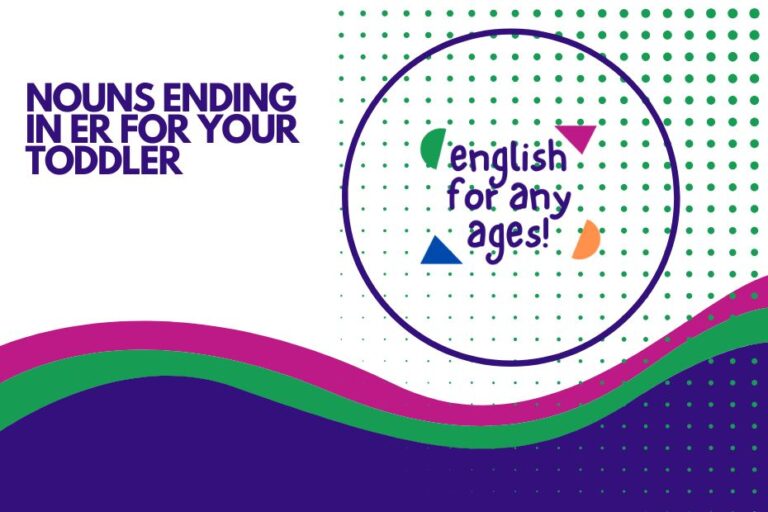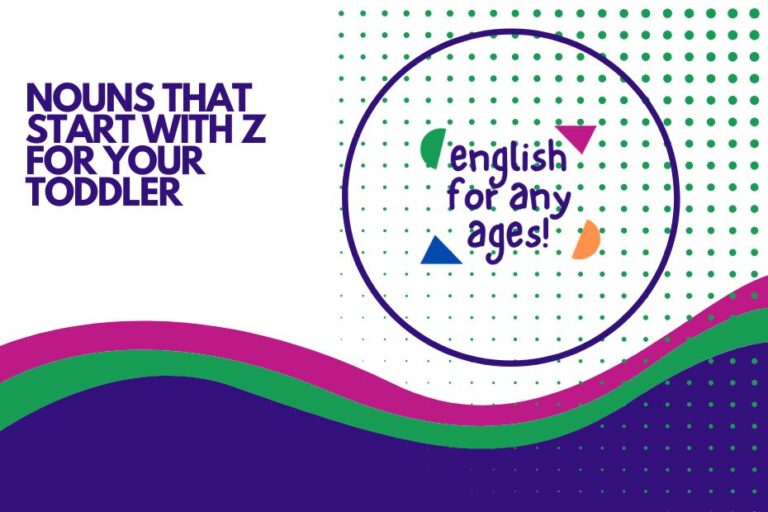The Oxford Comma: A Comprehensive Guide
The Oxford comma, also known as the serial comma, is a seemingly small punctuation mark with a significant impact on clarity and style in writing. While its presence or absence might seem trivial, it can drastically alter the meaning of a sentence.
Understanding the Oxford comma is crucial for anyone who wants to write with precision and avoid ambiguity. This guide will provide a thorough exploration of the Oxford comma, covering its definition, usage rules, common mistakes, and arguments for and against its use, suitable for English language learners and professionals alike.
Whether you’re a student, a professional writer, or simply someone who wants to improve their grammar skills, mastering the Oxford comma is essential. This article breaks down the complexities of this punctuation mark, offering clear explanations, numerous examples, and practical exercises to help you confidently navigate its use in your writing.
Table of Contents
- Definition of the Oxford Comma
- Structural Breakdown
- Types and Categories of Lists
- Examples of Oxford Comma Usage
- Usage Rules
- Common Mistakes
- Practice Exercises
- Advanced Topics
- Frequently Asked Questions
- Conclusion
Definition of the Oxford Comma
The Oxford comma, also referred to as the serial comma, is a comma placed before the conjunction (usually and or or) in a list of three or more items. Its primary function is to enhance clarity and prevent misinterpretation, especially in complex sentences where omitting it could lead to ambiguity. While its use is a matter of stylistic preference in some contexts, it often plays a crucial role in ensuring precise communication.
In essence, the Oxford comma acts as a separator, distinguishing the final item in a list from the preceding items. This distinction is particularly important when the last two items in the list are closely related or could be misinterpreted as a single unit.
Consider the classic example: “I love my parents, Lady Gaga and Humpty Dumpty.” Without the Oxford comma, it might appear that the speaker’s parents are Lady Gaga and Humpty Dumpty. The Oxford comma eliminates this confusion.
Classification
The Oxford comma falls under the broader category of punctuation marks, specifically those used for separation and clarity within sentences. It is closely related to other commas used in lists, but its specific position and purpose distinguish it. Punctuation marks, including commas, play a vital role in guiding the reader through the text, indicating pauses, separating elements, and clarifying relationships between words and phrases.
Function
The primary function of the Oxford comma is to prevent ambiguity. By clearly separating the last item in a list, it reduces the likelihood of misreading or misunderstanding the intended meaning. Additionally, it can enhance the rhythm and flow of a sentence, making it easier to read and comprehend. In some cases, the Oxford comma is also used to maintain consistency within a document or publication, adhering to a specific style guide.
Contexts
The use of the Oxford comma varies depending on the context and style guide being followed. In academic writing, particularly in the humanities and social sciences, the Oxford comma is generally preferred for its clarity and precision.
Style guides such as the Chicago Manual of Style advocate for its consistent use. However, in journalism and some areas of business writing, the Oxford comma is often omitted to save space and maintain a more concise style, as dictated by the Associated Press Stylebook.
Ultimately, the decision to use the Oxford comma depends on the specific requirements of the writing task and the preferences of the editor or publisher.
Structural Breakdown
Understanding the structural placement of the Oxford comma is key to using it correctly. It always appears immediately before the coordinating conjunction (usually and or or) that precedes the final item in a list of three or more elements. Let’s break down the structure:
Item 1, Item 2, and/or Item 3
The key element is the comma placed after “Item 2” and before “and/or.” This comma is the Oxford comma. It separates “Item 2” from the final conjunction and “Item 3”.
Without it, the relationship between “Item 2” and “Item 3” might become unclear, potentially leading to misinterpretation.
Consider these examples to illustrate the structural breakdown:
- With Oxford Comma: “I need to buy milk, bread, and eggs.”
- Without Oxford Comma: “I need to buy milk, bread and eggs.”
In the first example, the Oxford comma clearly separates “bread” and “eggs,” indicating that they are distinct items. In the second example, the absence of the comma could suggest that “bread and eggs” are a single unit, although this is less likely in this particular case.
Here’s another example with “or”:
- With Oxford Comma: “You can choose coffee, tea, or juice.”
- Without Oxford Comma: “You can choose coffee, tea or juice.”
Again, the Oxford comma ensures that each item is clearly distinguished from the others.
Patterns
The structural pattern remains consistent regardless of the length of the list. For example:
Item 1, Item 2, Item 3, Item 4, and/or Item 5
The Oxford comma always precedes the final conjunction. Here are some examples:
- “She packed her bags with clothes, shoes, toiletries, and books.”
- “The committee consisted of doctors, nurses, administrators, or researchers.”
In each case, the Oxford comma maintains clarity and prevents potential ambiguity.
Types and Categories of Lists
The Oxford comma is applicable to various types of lists, each with its own nuances. Understanding these categories can help you make informed decisions about whether or not to use the Oxford comma in specific situations.
Simple Lists
Simple lists consist of individual items that are easily distinguishable. These are the most common types of lists where the Oxford comma is used.
Examples:
- “I bought apples, bananas, and oranges.”
- “The colors of the rainbow are red, orange, yellow, green, blue, indigo, and violet.”
Complex Lists
Complex lists contain items that are more descriptive or involve phrases. In these cases, the Oxford comma is particularly useful for preventing misinterpretation.
Examples:
- “For dinner, we had steak, mashed potatoes with gravy, and green beans.”
- “The conference featured speakers from Harvard University, Stanford University, and the University of California, Berkeley.”
Lists with Paired Items
When a list includes items that are naturally paired, the Oxford comma can help to clarify the separation between the pairs and the individual items.
Examples:
- “I enjoy reading books and magazines, watching movies and TV shows, and listening to music.”
- “She likes to eat pizza and pasta, drink coffee and tea, and listen to classical and jazz music.”
Lists with Series of Actions
When a list describes a series of actions or events, the Oxford comma can improve the flow and clarity of the sentence.
Examples:
- “He woke up, brushed his teeth, ate breakfast, and went to work.”
- “She studied hard, practiced diligently, performed confidently, and won the competition.”
Examples of Oxford Comma Usage
This section provides a variety of examples demonstrating the use of the Oxford comma in different contexts. The tables below illustrate how the Oxford comma enhances clarity and prevents ambiguity.
Table 1: Simple Lists with and without the Oxford Comma
This table showcases how the Oxford comma affects the clarity of simple lists, highlighting potential ambiguities that arise from its omission.
| Sentence Without Oxford Comma | Sentence With Oxford Comma | Explanation |
|---|---|---|
| I like apples, bananas and oranges. | I like apples, bananas, and oranges. | The Oxford comma clearly separates each fruit. |
| She bought a pen, paper and a ruler. | She bought a pen, paper, and a ruler. | The Oxford comma ensures each item is distinct. |
| We need milk, bread and cheese. | We need milk, bread, and cheese. | The added comma provides a clearer separation. |
| He invited John, Mary and Peter. | He invited John, Mary, and Peter. | The Oxford comma clarifies that these are three separate people. |
| I packed socks, shirts and pants. | I packed socks, shirts, and pants. | Without the comma, “shirts and pants” could be misconstrued as one item. |
| She enjoys reading, writing and painting. | She enjoys reading, writing, and painting. | The Oxford comma helps to separate each activity. |
| The team consists of Tom, Sarah and Emily. | The team consists of Tom, Sarah, and Emily. | The comma ensures that each person is clearly listed. |
| They ordered pizza, salad and drinks. | They ordered pizza, salad, and drinks. | The Oxford comma makes the list more readable. |
| I visited Paris, Rome and London. | I visited Paris, Rome, and London. | Each city is clearly separated with the Oxford comma. |
| He studied math, science and history. | He studied math, science, and history. | The Oxford comma adds clarity to the list of subjects. |
| She speaks English, Spanish and French. | She speaks English, Spanish, and French. | The Oxford comma distinctly lists each language. |
| We saw lions, tigers and bears. | We saw lions, tigers, and bears. | The Oxford comma separates each animal. |
| I need to buy coffee, sugar and cream. | I need to buy coffee, sugar, and cream. | The Oxford comma ensures each item is distinct. |
| She wore a hat, scarf and gloves. | She wore a hat, scarf, and gloves. | The comma clearly separates each item of clothing. |
| He likes to play football, basketball and tennis. | He likes to play football, basketball, and tennis. | The Oxford comma lists each sport distinctly. |
| I read books, articles and blogs. | I read books, articles, and blogs. | The Oxford comma adds clarity to the list of reading materials. |
| She sings, dances and acts. | She sings, dances, and acts. | The Oxford comma separates each activity clearly. |
| He likes dogs, cats and birds. | He likes dogs, cats, and birds. | The Oxford comma distinctively lists each animal. |
| I ate pasta, bread and salad. | I ate pasta, bread, and salad. | The Oxford comma ensures each food item is distinct. |
| The store sells toys, games and books. | The store sells toys, games, and books. | The Oxford comma adds clarity to the list of products. |
Table 2: Complex Lists with and without the Oxford Comma
This table illustrates the importance of the Oxford comma in complex lists, where the potential for misinterpretation is higher.
| Sentence Without Oxford Comma | Sentence With Oxford Comma | Explanation |
|---|---|---|
| I love my parents, Lady Gaga and Humpty Dumpty. | I love my parents, Lady Gaga, and Humpty Dumpty. | Without the comma, it sounds like Lady Gaga and Humpty Dumpty are the speaker’s parents. |
| We invited the speakers, the organizers and the sponsors. | We invited the speakers, the organizers, and the sponsors. | The Oxford comma clearly separates each group of people. |
| She thanked her coaches, her teachers and her parents. | She thanked her coaches, her teachers, and her parents. | The Oxford comma ensures each group is distinct. |
| I need to buy milk, bread and a carton of eggs. | I need to buy milk, bread, and a carton of eggs. | The Oxford comma prevents “bread and a carton of eggs” from being read as a single item. |
| He visited Italy, France and the United Kingdom. | He visited Italy, France, and the United Kingdom. | The Oxford comma lists each country clearly. |
| She likes to eat pizza, pasta and a glass of wine. | She likes to eat pizza, pasta, and a glass of wine. | The Oxford comma makes the list more readable and prevents confusion. |
| We saw lions, tigers and a group of monkeys. | We saw lions, tigers, and a group of monkeys. | The Oxford comma ensures each item is distinct. |
| I read books, articles and a series of blogs. | I read books, articles, and a series of blogs. | The Oxford comma adds clarity to the list of reading materials. |
| She sings, dances and plays the piano. | She sings, dances, and plays the piano. | The Oxford comma separates each activity clearly. |
| He likes dogs, cats and a variety of birds. | He likes dogs, cats, and a variety of birds. | The Oxford comma distinctively lists each animal. |
| I ate pasta, bread and a side of salad. | I ate pasta, bread, and a side of salad. | The Oxford comma ensures each food item is distinct. |
| The store sells toys, games and a selection of books. | The store sells toys, games, and a selection of books. | The Oxford comma adds clarity to the list of products. |
| I invited John, Mary and her best friend Peter. | I invited John, Mary, and her best friend Peter. | The Oxford comma clarifies that these are three separate people. |
| He packed socks, shirts and a pair of pants. | He packed socks, shirts, and a pair of pants. | Without the comma, “shirts and a pair of pants” could be misconstrued as one item. |
| She enjoys reading, writing and long walks on the beach. | She enjoys reading, writing, and long walks on the beach. | The Oxford comma helps to separate each activity. |
| The team consists of Tom, Sarah and the new intern, Emily. | The team consists of Tom, Sarah, and the new intern, Emily. | The comma ensures that each person is clearly listed. |
| They ordered pizza, salad and a bottle of wine. | They ordered pizza, salad, and a bottle of wine. | The Oxford comma makes the list more readable. |
| I visited Paris, Rome and the beautiful city of London. | I visited Paris, Rome, and the beautiful city of London. | Each city is clearly separated with the Oxford comma. |
| He studied math, science and the history of Europe. | He studied math, science, and the history of Europe. | The Oxford comma adds clarity to the list of subjects. |
| She speaks English, Spanish and a little bit of French. | She speaks English, Spanish, and a little bit of French. | The Oxford comma distinctly lists each language. |
Table 3: Examples with “or”
This table focuses on examples using the conjunction “or,” demonstrating how the Oxford comma clarifies choices and alternatives.
| Sentence Without Oxford Comma | Sentence With Oxford Comma | Explanation |
|---|---|---|
| You can choose coffee, tea or juice. | You can choose coffee, tea, or juice. | The Oxford comma clearly separates each drink option. |
| He can travel by car, train or plane. | He can travel by car, train, or plane. | The Oxford comma ensures each mode of transport is distinct. |
| She might bring a book, a magazine or a newspaper. | She might bring a book, a magazine, or a newspaper. | The Oxford comma adds clarity to the list of reading materials. |
| The options are red, blue or green. | The options are red, blue, or green. | The Oxford comma clearly separates each color. |
| You can pay with cash, check or credit card. | You can pay with cash, check, or credit card. | The Oxford comma lists each payment method distinctly. |
| He might study math, science or English. | He might study math, science, or English. | The Oxford comma ensures each subject is clearly listed. |
| She could invite Tom, Sarah or Emily. | She could invite Tom, Sarah, or Emily. | The Oxford comma clarifies that these are three separate people. |
| They might order pizza, salad or pasta. | They might order pizza, salad, or pasta. | The Oxford comma makes the list more readable. |
| He might visit Paris, Rome or London. | He might visit Paris, Rome, or London. | Each city is clearly separated with the Oxford comma. |
| She might speak English, Spanish or French. | She might speak English, Spanish, or French. | The Oxford comma distinctly lists each language. |
| You can have cake, ice cream or pie. | You can have cake, ice cream, or pie. | The Oxford comma clearly separates each dessert option. |
| He can choose apples, bananas or oranges. | He can choose apples, bananas, or oranges. | The Oxford comma clearly separates each fruit choice. |
| She might buy a pen, paper or a ruler. | She might buy a pen, paper, or a ruler. | The Oxford comma ensures each item is distinct. |
| We need milk, bread or cheese. | We need milk, bread, or cheese. | The added comma provides a clearer separation. |
| I can pack socks, shirts or pants. | I can pack socks, shirts, or pants. | Without the comma, “shirts or pants” could be misconstrued as one item. |
| She enjoys reading, writing or painting. | She enjoys reading, writing, or painting. | The Oxford comma helps to separate each activity. |
| The team consists of Tom, Sarah or Emily. | The team consists of Tom, Sarah, or Emily. | The comma ensures that each person is clearly listed. |
| They can order pizza, salad or drinks. | They can order pizza, salad, or drinks. | The Oxford comma makes the list more readable. |
| I can visit Paris, Rome or London. | I can visit Paris, Rome, or London. | Each city is clearly separated with the Oxford comma. |
| He can study math, science or history. | He can study math, science, or history. | The Oxford comma adds clarity to the list of subjects. |
Table 4: Examples of Complex Sentences
This table showcases complex sentences where the Oxford comma is crucial for maintaining clarity and avoiding misinterpretations.
| Sentence Without Oxford Comma | Sentence With Oxford Comma | Explanation |
|---|---|---|
| Among those interviewed were the mayor, his chief of staff and a local journalist. | Among those interviewed were the mayor, his chief of staff, and a local journalist. | Without the comma, it could read as if the mayor’s chief of staff is the local journalist. |
| This book is dedicated to my parents, Ayn Rand and God. | This book is dedicated to my parents, Ayn Rand, and God. | The comma ensures that Ayn Rand and God are not being identified as the speaker’s parents. |
| We had sandwiches, cake and ice cream and lemonade. | We had sandwiches, cake, and ice cream and lemonade. | The Oxford comma separates the main items from the combined ice cream and lemonade. |
| The company hired John, Mary, Susan and David and Tom. | The company hired John, Mary, Susan, and David and Tom. | The added comma separates the initial list from the final pair. |
| She thanked her friends, family and her mentor and advisor. | She thanked her friends, family, and her mentor and advisor. | The Oxford comma ensures each group is distinct. |
| I need to buy milk, bread and a carton of eggs and juice. | I need to buy milk, bread, and a carton of eggs and juice. | The Oxford comma prevents “bread and a carton of eggs” from being read as a single item. |
| He visited Italy, France and the United Kingdom and Spain. | He visited Italy, France, and the United Kingdom and Spain. | The Oxford comma lists each country clearly. |
| She likes to eat pizza, pasta and a glass of wine and dessert. | She likes to eat pizza, pasta, and a glass of wine and dessert. | The Oxford comma makes the list more readable and prevents confusion. |
| We saw lions, tigers and a group of monkeys and elephants. | We saw lions, tigers, and a group of monkeys and elephants. | The Oxford comma ensures each item is distinct. |
| I read books, articles and a series of blogs and journals. | I read books, articles, and a series of blogs and journals. | The Oxford comma adds clarity to the list of reading materials. |
| She sings, dances and plays the piano and guitar. | She sings, dances, and plays the piano and guitar. | The Oxford comma separates each activity clearly. |
| He likes dogs, cats and a variety of birds and reptiles. | He likes dogs, cats, and a variety of birds and reptiles. | The Oxford comma distinctively lists each animal. |
| I ate pasta, bread and a side of salad and soup. | I ate pasta, bread, and a side of salad and soup. | The Oxford comma ensures each food item is distinct. |
| The store sells toys, games and a selection of books and puzzles. | The store sells toys, games, and a selection of books and puzzles. | The Oxford comma adds clarity to the list of products. |
| I invited John, Mary and her best friend Peter and Tom. | I invited John, Mary, and her best friend Peter and Tom. | The Oxford comma clarifies that these are three separate people. |
| He packed socks, shirts and a pair of pants and shoes. | He packed socks, shirts, and a pair of pants and shoes. | Without the comma, “shirts and a pair of pants” could be misconstrued as one item. |
| She enjoys reading, writing and long walks on the beach and hiking. | She enjoys reading, writing, and long walks on the beach and hiking. | The Oxford comma helps to separate each activity. |
| The team consists of Tom, Sarah and the new intern, Emily and John. | The team consists of Tom, Sarah, and the new intern, Emily and John. | The comma ensures that each person is clearly listed. |
| They ordered pizza, salad and a bottle of wine and dessert. | They ordered pizza, salad, and a bottle of wine and dessert. | The Oxford comma makes the list more readable. |
| I visited Paris, Rome and the beautiful city of London and Berlin. | I visited Paris, Rome, and the beautiful city of London and Berlin. | Each city is clearly separated with the Oxford comma. |
Usage Rules
The primary rule for using the Oxford comma is to place it before the coordinating conjunction (and or or) in a list of three or more items. However, there are nuances and exceptions to consider.
Consistent Usage
The most important rule is to be consistent. If you choose to use the Oxford comma, use it throughout your document. Similarly, if you choose to omit it, be consistent in its omission. Inconsistency can be jarring and confusing for the reader.
Clarity is Key
When in doubt, err on the side of clarity. If omitting the Oxford comma could potentially lead to ambiguity, it’s best to include it, even if your style guide generally advises against it.
Style Guides
Follow the style guide required for your writing task. The Chicago Manual of Style advocates for the Oxford comma, while the Associated Press Stylebook generally advises against it. Academic papers, journalistic articles, and business reports may all have different requirements.
Exceptions
There are some exceptions to the general rule. For example, if the items in the list are very short and simple, and there is no risk of ambiguity, the Oxford comma may be omitted.
However, even in these cases, consistency is still important.
Example:
- “I ate bread, cheese and ham.” (Oxford comma omitted due to simplicity)
Common Mistakes
One of the most common mistakes is using the Oxford comma inconsistently. Another is omitting it when it’s necessary for clarity.
Here are some examples of common mistakes and how to correct them:
Table 5: Common Mistakes with the Oxford Comma
This table illustrates common errors in using the Oxford comma, providing both incorrect and corrected examples to highlight the importance of proper punctuation.
| Incorrect Sentence | Correct Sentence | Explanation |
|---|---|---|
| I like apples, bananas and oranges, sometimes. | I like apples, bananas, and oranges, sometimes. | The Oxford comma is missing before “and.” |
| She bought a pen, paper, and a ruler. But not a book. | She bought a pen, paper, and a ruler. But not a book. | This sentence is already correct. |
| We need milk, bread and cheese, for the party. | We need milk, bread, and cheese, for the party. | The Oxford comma should be included for clarity. |
| He invited John, Mary and Peter. It was fun. | He invited John, Mary, and Peter. It was fun. | The Oxford comma is needed between Mary and and. |
| I packed socks, shirts, and pants, and shoes. | I packed socks, shirts, and pants, and shoes. | This sentence is correct. No changes needed. |
| She enjoys reading, writing and painting, a lot. | She enjoys reading, writing, and painting, a lot. | The Oxford comma is missing. |
| The team consists of Tom, Sarah and Emily, always. | The team consists of Tom, Sarah, and Emily, always. | The Oxford comma should be included. |
| They ordered pizza, salad and drinks, quickly. | They ordered pizza, salad, and drinks, quickly. | The Oxford comma is missing. |
| I visited Paris, Rome and London, last year. | I visited Paris, Rome, and London, last year. | The Oxford comma should be included for clarity. |
| He studied math, science and history, in college. | He studied math, science, and history, in college. | The Oxford comma is missing. |
Practice Exercises
These exercises will help you practice using the Oxford comma correctly. Identify whether the Oxford comma is needed in each sentence and add it if necessary.
Exercise 1: Identifying and Adding the Oxford Comma
Read each sentence carefully and insert the Oxford comma where it is needed to ensure clarity.
| Question | Answer |
|---|---|
| 1. I need to buy milk bread and eggs. | 1. I need to buy milk, bread, and eggs. |
| 2. She enjoys reading writing and painting. | 2. She enjoys reading, writing, and painting. |
| 3. The colors are red blue and green. | 3. The colors are red, blue, and green. |
| 4. He invited John Mary and Peter to the party. | 4. He invited John, Mary, and Peter to the party. |
| 5. I packed socks shirts and pants for the trip. | 5. I packed socks, shirts, and pants for the trip. |
| 6. She likes dogs cats and birds as pets. | 6. She likes dogs, cats, and birds as pets. |
| 7. We need coffee sugar and cream for the recipe. | 7. We need coffee, sugar, and cream for the recipe. |
| 8. He studied math science and history in school. | 8. He studied math, science, and history in school. |
| 9. She speaks English Spanish and French fluently. | 9. She speaks English, Spanish, and French fluently. |
| 10. I visited Paris Rome and London last summer. | 10. I visited Paris, Rome, and London last summer. |
Exercise 2: Correcting Sentences with Missing or Incorrect Oxford Commas
Correct the following sentences by adding or removing the Oxford comma as needed.
| Question | Answer |
|---|---|
| 1. I like apples, bananas, and oranges sometimes. | 1. Correct (no change needed) |
| 2. She bought a pen, paper and a ruler. | 2. She bought a pen, paper, and a ruler. |
| 3. We need milk, bread and cheese for the party. | 3. We need milk, bread, and cheese for the party. |
| 4. He invited John, Mary, and Peter it was fun. | 4. He invited John, Mary, and Peter. It was fun. |
| 5. I packed socks, shirts, and pants and shoes. | 5. I packed socks, shirts, and pants, and shoes. |
| 6. She enjoys reading, writing and painting a lot. | 6. She enjoys reading, writing, and painting a lot. |






